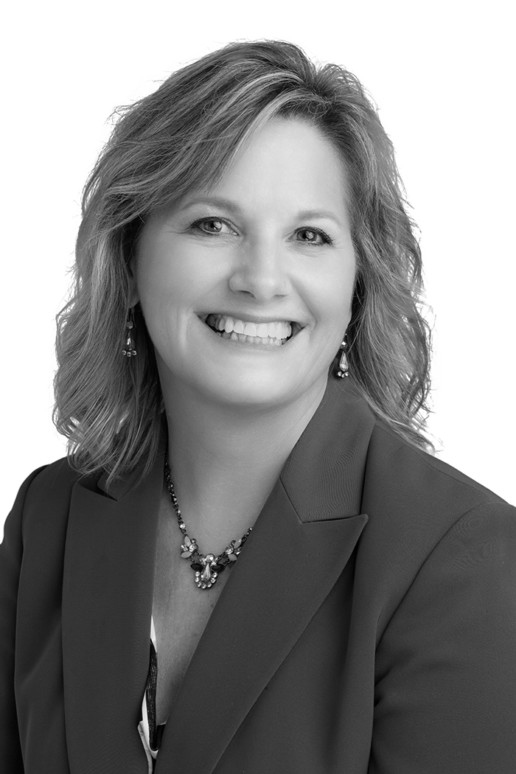4 Things to Know About Mental Health at Work
Did you know: 80 percent of workers will not seek help for mental health issues because of the associated shame and stigma. Read this blog post from SHRM for four things employees and employers should know about mental health in the workplace.
Kelly Greenwood graduated summa cum laude from Duke University with degrees in psychology and Spanish. She holds a master's degree in business from Northwestern University's Kellogg School of Management, contributes to Forbes magazine and is editor-at-large for Mental Health at Work, a blog on Thrive Global.
She also is someone who has managed generalized anxiety disorder since she was a young girl. It twice led to debilitating depression. During a Smart Stage presentation at the recent Society for Human Resource Management Inclusion 2019 event in New Orleans, she discussed how someone can be a high-performing individual and still contend with mental health issues.
Greenwood had to take a leave of absence after experiencing a perfect storm at work—a new job in an understaffed, dysfunctional environment; an inflexible schedule that caused her to miss therapy sessions; and a change in her medication. When it became clear her performance had deteriorated, she was forced to disclose her condition to her manager.
She took a three-month leave, but that only fueled her anxiety. Still in her 30s, she worried about whether she would be able to return to work and feared her career was over. It wasn't. She went on to join the executive team of a nonprofit and in 2017 founded Mind Share Partners, a San Francisco-based nonprofit that offers corporate training and advising on mental health.
Greenwood shared the following four things she wishes she had known earlier in her life about mental health:
- Mental health is a spectrum. "Hardly anybody is 100 percent mentally healthy" all the time, she said. "We all go back and forth on this spectrum throughout the rest of our lives." The grief a person experiences over the loss of a loved one, for example, affects that person's mental health. "You can be successful and have a mental health condition," Greenwood said, noting that a study Mind Share Partner conducted with Harvard Business Review (HBR) found that mental health symptoms are equally prevalent across seniority levels within companies, all the way up to the C-suite.
- You cannot tell a person's mental condition by his or her behavior. "It's never your job," she told managers and other workplace leaders, "to diagnose or gather [information] or assume what's going on. Our goal at work is not to be clinicians, but to create a supportive environment."
- Mental health conditions and symptoms, including suicidal thoughts, are common. Greenwood said the Mind Share Partners/HBR study found that 60 percent of 1,500 people surveyed online in March and April said they had a mental health symptom: feeling anxious, sad or numb or experiencing a loss of interest or pleasure in most activities for at least two weeks. National Institutes of Health research suggests that up to 80 percent of people will manage a diagnosable mental health condition in their lifetime. "They may not know it," Greenwood said. "It may be a moment in time because of a job loss or grief over a death. That means mental health affects every conference call, every team meeting. It is the next frontier of diversity and inclusion."
- Workplace culture can reinforce the stigma around mental health issues. And so, 80 percent of workers will not seek help because of the associated shame and stigma. If they do, they cite a different reason, such as a headache or upset stomach, rather than admit they are taking time off because of stress. That is leading to what Greenwood calls a "huge retention issue," with 50 percent of Millennials and 75 percent of Generation Z saying they left a job—voluntarily and involuntarily—because of a mental health challenge. She advised leaders to have "courageous conversations" with those they work with. Even simply engaging in a discussion about having to deal with a child's tantrum can be powerful.
"There is so much research," she said, "about the power of vulnerability in leadership."
SOURCE: Gurchiek, K. (12 November 2019) "4 Things to Know About Mental Health at Work" (Web Blog Post). Retrieved from https://www.shrm.org/resourcesandtools/hr-topics/behavioral-competencies/global-and-cultural-effectiveness/pages/4-things-to-know-about-mental-health-at-work.aspx
Key factors in choosing your benefits during open enrollment
Employers are now realizing that in order to attract and retain talent, they have to provide the best benefits. But, how do employees select the right benefits out of all the available options? Read the following blog post from Employee Benefit News for a few key factors to consider when choosing your benefits during open enrollment.
Even if you are a veteran in choosing employer-sponsored benefits, the landscape is shifting. Over the past years, we’ve seen changes to mental health counseling stipends, extended maternity/paternity leave and family building. Companies across industries are realizing that in order to attract and retain talent, they need to provide best in class benefits that save employers unforeseen costs in the long run, and shows employees that their employers are invested in their wellbeing — in and out of the office.
With all these available options and only a short window to select what’s right for you, here’s what should you look out for during open enrollment.
Which benefits matter to me?
The beauty of a diverse workforce is that employees may represent various walks of life. However, this means that not all benefits make sense for every person. Perhaps your boss is prioritizing childcare for his toddler while your colleague is looking to refinance student loans. Whatever your life circumstance, ask yourself, “Which benefits are most pertinent to my life and life goals in the coming year?”
For instance, fertility benefits may not be immediately attractive at first glance, even if you’re actively thinking about starting a family. But 1 in 8 couples will be impacted by infertility and treatment without coverage can be wildly expensive. It’s important to make sure you’re thinking critically and getting all the necessary information when browsing for your benefits. Rule of thumb: if this could impact you in the coming year, even if you’re not 100% sure, opt-in for coverage.
What’s actually covered?
During open enrollment, be sure to ask your benefits team about how robust each offering is and what’s included. A particular benefit may look like it has a lot to offer, but after further investigation, you may uncover restrictions, unforeseen out of pocket costs and other obstacles that may make it harder for you to utilize the benefit.
With fertility benefits, many conventional carriers offer coverage with a dollar maximum, meaning you’d max out on coverage before completing a full IVF cycle. Plus, there are additional costs outside of the basic IVF procedure, like diagnostic testing, medications, and genetic testing which may come with a hefty price tag you’d have to pay for. Without adequate coverage, many people have to make cost-based decisions, forgoing the technology they need to reach a successful outcome.
As an alternative, Progyny’s coverage is bundled, meaning your entire treatment event is covered and you do not have to worry about what is or is not included, or fear running out of coverage mid-way through. Many vendors have similar disruptive solutions to ensure they’re not leaving their members high and dry during difficult times.
When sifting through options, be sure you’re asking what’s covered and not covered under your plan. A lot of benefits may seem expansive, but make sure you’re getting the most out of the coverage that’s available to you. Ask: Are the best clinics in your area included in your plan as “in-network”? Do you have to meet medical necessity requirements before being allowed to access your benefits?
Which benefits are supported?
Once you’ve opted in for benefits during open enrollment, how do you access your benefit? How do you move forward with treatment? Does your benefit provide access to the doctors in your area? Since many of these offerings are complex and without proper onboarding, how can you be expected to understand the next steps?
With the growing emphasis on mental health and concierge member experience, companies like Progyny try to eliminate some of the member’s burden and create an easy to use benefit model that provides member support. For example, our dedicated Patient Care Advocates — a concierge-style fertility coach — helps members navigate the clinical and emotional aspects of your fertility treatment, making a difficult process a bit easier.
Another important factor to consider when shopping for benefits is access to care where you live — are the doctors that your insurance covers close by and easy to get to? When choosing your benefits, look out for any information about access to support. The goal of a benefit is to make your life easier, not leave you feeling confused and stressed in times of need.
What do I do if I’m unhappy with the benefits offered during open enrollment?
Often times, employers are unaware of what an employee wants until it’s brought to their attention. If you are unhappy with the benefits offered, raise the issue with your HR team! You are your own best advocate and change begins with you.
Not sure where to start? If you are comfortable, speak with your colleagues. Seek out a company resource group to see if others have similar needs. This way you can help form a plan or a way to approach HR. Once you have an idea of what you need, talk to HR to explain why the proposed benefit would be pertinent to you and your colleagues. Employers understand that the key to keeping good talent is making sure they’re happy.
Open enrollment can be overwhelming but take advantage of the resources you have. Ask questions, do your research, and discuss the options with experts in your office. With an arsenal of helpful information at your disposal, open enrollment should be stress-free and get you excited for all of the incredible employer-sponsored benefits in your future.
SOURCE: Ajmani, K. (25 November 2019) "Key factors in choosing your benefits during open enrollment" (Web Blog Post). Retrieved from https://www.benefitnews.com/opinion/how-to-choose-benefits-during-open-enrollment
How employers can prevent a new parent penalty in the workplace
The new parent penalty, a bias against new parents, often occurs when employees return from parental leave. The penalty presents itself in managers and colleagues who assume individuals are no longer interested in the upward growth of the company. Read this blog post from Employee Benefit News for ways employers can prevent a new parent penalty in the workplace.
Returning to work after parental leave is a rigorous experience for many employees. It can be a difficult time filled with adjustment pain points and career growth setbacks, all stemming from a surprising cause: the new parent penalty.
This penalty — or bias against new parents — presents itself by way of managers and colleagues assuming these individuals are no longer interested in or dedicated to upward growth in the company in the same way they were prior to taking time off. Unfortunately, this is an all-too-common hurdle. This bias often has a negative impact on the morale and career potential of employees who experience it.
Yet there are several actionable steps that HR leaders and employers, in general, should keep in mind to help new parents get back into the swing of things at work.
Evaluate your current leave options. The first step to ensuring a smooth re-entry to the workplace is implementing a leave policy that allows employees enough time to adjust to their new roles as parents. Only 14% of Americans have access to any paid family leave for the birth of a child, according to Pew Research Center. Even more, 23% of mothers are back on the job within 10 days of giving birth whether they're physically ready or not, according to the Department of Labor. This often results in mothers leaving the workforce, even if though they want to stay. Paid family leave is critical — it improves health outcomes for recovering mothers and new babies and improves retention of new parents.
Set the entire team up to succeed. One thing I often hear from clients at Maven who struggle with returning to work is that there is pressure from managers to resume a business as usual mindset, ignoring the significant shift in their lives. Managers should be trained to help mitigate this by providing better re-entry support. Employers can no longer expect parents to work at all hours or travel at the drop of the hat without some flexibility. Providing a transition or ramp time can be extremely successful in helping parents juggle their often competing work priorities and the needs of their children. Transition time also helps set expectations for other team members who may feel frustrated and overworked when parents come back to work unable to operate in the same capacity that they once did — enter parental bias.
Support career advancement with individualized plans. A client who recently returned to work after maternity leave was surprised to learn during a progress meeting that her manager had placed her on a so-called mommy track. She had requested a flexible work schedule upon her return from leave. Her manager assumed that meant she was no longer interested in opportunities for growth at the company.
This mother is not alone, many new parents face similar roadblocks in career advancement as a result of employers scaling back on assigning them responsibilities that would keep them on the leadership track. Instead of assuming what the new parents are looking for, employers should offer individualized paths for success. This ensures that new parents can continue to grow their careers even if they choose more flexible schedules.
Create a support system. Implementing employee resource groups can be an invaluable tool for new parents looking to connect and receive advice from their colleagues, who have been in their positions. Connecting employees with peers who can speak first hand about the pain points of new working parenthood, and how to make the transition easier can go a long way. Having easy access to a network like this lets employees feel like their concerns are heard and their needs are being met. These employees are in turn more likely to confidently stay in their careers rather than dropping out.
Employers are understanding that there are significant benefits to supporting their employees’ transition back to the workforce, including an increase in retention, culture improvements, and positive impact on their bottom lines. In short: paid family leave is a good thing, and when combined with individualized support from managers and team members, a parent’s return to work is smoother. By understanding the needs of their employees, employers are better equipped and more prepared to anticipate and prevent parental bias that hinders employee and company growth.
SOURCE: Ferrante, M. (5 November 2019) "How employers can prevent a new parent penalty in the workplace" (Web Blog Post). Retrieved from https://www.benefitnews.com/opinion/how-employers-can-prevent-a-new-parent-penalty-in-the-workplace
IRS increases retirement contributions for 2020
Recently, the Internal Revenue Service (IRS) announced that workers contributing to 401(k), 403(b), 457 and the federal government’s Thrift Savings Plans will be able to add up to $19,500 in 2020. Read this blog post to learn more about this increase in retirement contributions.
The IRS said this week that workers contributing to 401(k), 403(b), 457 and the federal government’s Thrift Savings Plans plans can add $19,500 next year, an increase from $19,000 in 2019.
The move could help workers save more for retirement, but it may be inconvenient for employers who’ve already started open enrollment, experts say. Employees are now able to set aside $500 more for retirement.
“Every penny counts when you’re saving for retirement, and the higher contribution limit is definitely going to help,” says Jacob Mattinson, partner at McDermott, Will & Emery, a Chicago-based law firm. “But since companies are in the midst of open enrollment, employers may have to go back in and change the entries for employees who want to contribute the max.”
There are about 27.1 million 401(k) plan participants using roughly 110,794 employer-sponsored 401(k) plans, the Employee Benefit Research Institute says. Ninety-three percent of employers offer a 401(k) plan, and around 74% of companies match workers’ contributions, according to data from the Society for Human Resource Management.
While the vast majority of employers do offer retirement savings plans, employees may still be struggling to sock away money. Around 70% of workers say debt has negatively impacted their ability to save for retirement, EBRI says.
“Thirty-two percent of workers with a major debt problem are not at all confident about their prospects for a financially secure retirement, compared with 5% of workers without a debt problem,” says Craig Copeland, EBRI senior research associate.
The IRS also upped contribution limits on Savings Incentive Match Plan for Employees plans, or SIMPLE retirement accounts, to $13,500 from $13,000. The agency did not change the contribution limits to IRAs, which remain at $6,000 annually.
SOURCE: Hroncich, C. (7 November 2019) "IRS increases retirement contributions for 2020" (Web Blog Post). Retrieved from https://www.benefitnews.com/news/irs-increases-retirement-contributions-for-2020
A benefits wishlist for millennial employees
Did you know: 63 percent of millennials would struggle to cover an unexpected expense of $500. With millennials becoming the new core of today's workforce, many employers are tailoring their job postings, descriptions and benefits to correspond with the millennial wish list. Read the following article to learn more.
Millennials are the new core workforce. Their concept of work is different than the standards set by previous generations. They bring bold, new approaches of what work should be, how and where it should be performed, and what the rewards for work should be.
While this has made some employers uncomfortable, millennials are not likely to change their ways. Employers must reassess their concepts to bring out the best of the unique millennial personality.
When I look at the U.S. workforce, I see a dramatic shift in the attitudes, personalities and attributes of millennials, which makes up the majority of the workforce. Millennials bring many positive attributes to the table, including a preference for flat management structures, multiple degrees, technological skills, energy and self-confidence. They also have high expectations for themselves, prefer to work in teams, are able to multitask and seek out challenges.
However, millennials have the highest levels of stress and depression of any generation. About 20% of millennial workers have suffered work-related depression. Millennials want their own living space, but they’re less likely to become homeowners because of student loan debt. Only 6% of millennials feel they're making enough to cover basic needs, according to an Economic Innovation Group national survey of millennials. As a result, 63% of millennials would struggle to cover an unexpected $500 expense. This generation wants to live within their means, but they’ve never been taught how — they need and want to be educated on how to achieve financial independence.
Think about your corporate strategy for attracting millennials. Here are just a few of the ways companies are tailoring their job postings, descriptions and benefits to correspond with the millennial wish list.
Working with meaning. Millennials want to have meaning in their work. Past generations may have worked simply because they needed to pay the bills. Millennials want to get paid too, but they also want to know that their employer is doing more than making and selling products or services. They aspire to social causes and want to know why the organization exists and how they can personally participate and contribute in that culture.
Continued personal growth and career advancement. Millennials want to be coached and have work-life balance. They want management feedback, even if it’s negative. Regular pay increases and promotions are important to them too. It shows that you’re invested in their career path and value their contributions.
Flexible hours and the ability to work remotely. They want flexible hours and the option to work from a location of their choice. This flexibility also contributes to their desire for no added workplace stress. Technology has made it possible to connect 24/7 from anywhere on any device. If you have yet to adapt your culture to accept this new norm, you’ll likely be missing out on this generation of candidates.
Technology. Millennials are smart-device people. Who better to move your organization forward than the individuals who grew up knowing how to download and use an app, or create a widget that solves a problem? They think technology-first and is required for any organization looking to remain competitive.
Financial wellness. A robust financial wellness program that includes self-directed education, competitions, games and rewards will pique millennial interest. Products and services like financial coaching, cashflow tracking, early wage access and credit resources that address their financial challenges will keep them engaged. Above all, a financial wellness program must be tailored to each individual employee to achieve maximum participation and behavioral change.
Employers must be vigilant in order to keep the best and brightest talent. They should also be proactive in managing their employees on a personal level, especially millennials. Otherwise, they are likely to be disengaged and move on — and that will cost money.
As managers and leaders of the organization, it is your responsibility to ensure that millennials understand their future in the company and to communicate that they don’t have to go somewhere else to advance. Employers and leaders have a responsibility to provide millennials with a desirable place to land, and a culture that encourages them to thrive. Don’t give millennials reasons to leave your organization. We need to support them, engage them, reward them and give them reasons to stay.
SOURCE: Kilby, D. (6 November 2019) "A benefits wishlist for millennial employees" (Web Blog Post). Retrieved from https://www.benefitnews.com/opinion/what-employee-benefits-do-millennials-want
Working on Wellness: 5 Tips to Help You Prioritize Your Health
When it comes to personal wellness, it doesn't have to be one or the other when choosing health versus work. Read this blog post for five tips on prioritizing personal health and wellness.
Wellness is such a buzzword these days. It seems like everyone is talking about it, and with good reason. Taking care of yourself needs to be a top priority in your life, but that doesn’t mean it's easy. I know that you may feel stressed and overwhelmed with work, family, friends, or other commitments, but at the end of the day, your health should be your most prized commodity. Most people understand the importance of caring for their health, but cite numerous reasons why they just don’t have the time – namely, work. However, it doesn’t have to be one or the other. You can prioritize your well-being and succeed in the office. In fact, my theory is that an individual's personal wellness must be a top priority in order to achieve one's major corporate goals. Not only do I teach this method, but I live it too. Every. Single. Day.
Here are my 5 tips that will help you prioritize your health while thriving in the corporate world.
Find Your Passion
Deciding that you are going to start focusing on wellness is usually not difficult. However, when you are dreading the time you have set aside to go to the gym, that’s when it gets hard. It’s challenging to motivate yourself to do an activity that you despise doing, and it's even harder to keep it up. This is why it is important to find a task that you enjoy doing within the realm of wellness possibilities. Do you like lifting weights or doing aerobic exercises? Maybe swimming, yoga, or hiking is a better fit for you. There are a multitude of possibilities and something for everyone.
Personally, I’m a runner. I participate in ongoing marathons and IRONMAN 70.3 competitions across the globe. Over the next few months, I will embark on several major races. In September, I will be running a Marathon in Capetown, South Africa. The following month, I am going back for my second year of running 55 Miles through the Serengeti in Africa. To keep the momentum going, in November, I will be running in the TCS New York City Marathon. And then in December, I will be completing an IRONMAN 70.3 Cartagena in Colombia. I did not always compete in these types of races, but I worked up to it through rigorous training sessions. Embracing the open terrain while enjoying some time alone with my thoughts as I run is incredible.
Be Mindful of Your Time
The best advice I can give to those who worry that they don’t have enough time to exercise is to be aware of how you are using your time. Are you using your time efficiently to the fullest potential? Is there anything you can cut or shorten the time you devote to? Get creative. For example, I actually develop many of my business strategies while working out. I am able to let my mind ruminate about work while my body focuses on my wellness. Make time to move. Even if it’s just a little bit every day. Try taking a ten-minute break and going on a walk. Afterward, you’ll feel great and will probably be more productive too. The email can wait; your health cannot.
Follow a Routine
Consciously making the effort to prioritize your wellness isn’t always easy. This is why it is important to follow your routine. Stopping for even a few days makes it hard to get back into it again, and restarting again after a break is always the hardest part. On the other hand, sticking to a routine helps working out feel natural. It becomes a part of your day, an activity that happens somewhere in between waking up in the morning and falling asleep at night. Schedule your fitness into your calendar. If it’s on the calendar, it is real – just like that phone call or meeting you have scheduled after your workout. Setting aside time for your health is like making a promise to yourself to care about your well-being. Honor that promise.
Transfer Your Skills
It’s important to remember that working out is not just good for your body. Exercise also helps develop valuable skills that you can transfer to the workplace. I have completed many races this year, all of which help me to stay focused in my personal life and in the office. Following a schedule and setting goals when training and competing fosters an organized and centered mind when I am at work. I can focus on what I want to execute and achieve. The cadence of training is very similar to the way that I operate in the corporate landscape. Similarly, I attribute many of my most prized leadership qualities – including motivation, perseverance, and a stellar ability to navigate the daily struggle of balance – to an active and healthy lifestyle that is the impetus for day-to-day accomplishment. I first learned how to motivate myself to prioritize my well-being and how to persevere when training becomes a challenge. I worked to find a balance that fits my lifestyle. Then I was able to transfer those skills that I learned to helping others. After all, if you cannot take care of yourself, you cannot take care of your team.
Reward Yourself
Choose a fitness goal and obtain it, whether it's running a 5K or something completely different. Every time you train, you'll become stronger. Then, reward yourself when you make progress, whether it’s with a new outfit, new running shoes, or a pedicure that you have been dying to have. You worked hard for a goal and accomplished it, so treat yourself! Likewise, don’t forget the little victories. Be proud of yourself for training each day and be content with what you achieved. You are setting yourself up to be a happier and healthier you—and that is no small thing. This translates to the business side of things as well, the sense of completion.
Prioritizing your health may seem like something that is out of reach for you, simply because it just doesn’t fit into your schedule. But that’s not necessarily the case. If you have the right mindset going in and make a conscious effort, you can focus on both your wellness and corporate life. And you'll be thankful you did!
SOURCE: Vetere, R. (Accessed 1 November 2019) "Working on Wellness: 5 Tips to Help You Prioritize Your Health" (Web Blog Post). Retrieved from https://www.corporatewellnessmagazine.com/article/five-tips-to-prioritize-health
Subway’s new program helps workers get degrees
What voluntary benefits does your organization offer? Subway is now offering a program that gives workers access to career readiness and high school diploma programs. Read the following blog post to learn more about this new benefit.
Subway is making it easier for employees to get high school and college degrees.
The sandwich franchise is launching a new education benefit for employees in 331 restaurants in central Florida. The program, which began piloting last month, gives workers access to a career readiness and high school diploma program.
“I think something like this really does bring value and improves the lives of [our] employees,” says Michael Robling, an operations specialist at Subway for North America.
Subway’s program includes a career readiness boot camp and high school degree program offered through Penn Foster. Robling says the company has partnerships with several universities to help employees get college degrees at a discount. The company also offers scholarships for employees through the Frederick A. DeLuca Foundation, a private foundation created by one of Subway's co-founders.
“This is definitely just a start,” Robling says.
This move comes after Mexican-inspired restaurant chain Chipotle began offering free college degrees to its 80,000 employees from 75 business and technology degree programs. Employees at Chipotle can earn their associates or bachelor degrees online from the University of Arizona, Bellevue University, Brandman University, Southern New Hampshire University and Wilmington University.
More than half of employers offer a tuition assistance benefit to employees, according to data from the Society for Human Resource Management. Indeed, companies including Disney, Walmart and Discover, Chick-fil-A, Hulu, Lowe’s, McDonald’s and Taco Bell all also announced education benefits last year.
Robling says he thinks more employers will begin to invest in benefits that help workers achieve higher education goals. Employees at Subway are appreciative of the opportunity and it may help the company retain workers long-term, he adds.
“If the franchise owner is looking out for me, I’m going to be happier at work,” he says. “That’s one of the big positives of this program.”
SOURCE: Hroncich, C. (11 November 2019) "Subway’s new program helps workers get degrees" (Web Blog Post). Retrieved from https://www.benefitnews.com/news/education-assistance-for-college-and-high-school-diplomas
What would a workplace emergency-savings benefit look like?
Data from a recent survey indicates that a significant portion of American workers could face a financial emergency if they were hit with sudden bills, lost wages or other unforeseen expenses. Read this blog post to learn more about emergency-savings benefits.
An alarming number of workers don't have enough money saved away to carry them through even a short-lived financial emergency, and experts are urging employers to take steps to address that shortfall with changes to their benefits programs.
Survey data indicate that while savings rates vary based on a number of factors, substantial portions of American workers across income levels could face a financial emergency if they were hit with sudden medical bills, lost wages or other unforeseen expenses, such as a major home or car repair.
"Regardless of income we still see a significant percentage of people that do not have a rainy day fund that could cover three months of expenses," Craig Copeland, senior research associate at the Employee Benefit Research Institute, said on a recent online presentation the group hosted.
The AARP has been studying the issue, and recently reported that 53% of all American households have no emergency savings. Moreover, the retirement group reported a direct link between emergency funds and overall financial confidence. According to its recent report, Americans with rainy day funds are 2.5 times more likely to feel confident about their long-term financial prospects than those who do not.
"If people are living on such thin margins that an unexpected bill requires their complete attention and all existing resources to address it, it is extremely difficult to keep the longer-term in mind or to make progress toward longer-term goals," said Genevieve Melford, who helps lead a financial security program at the Aspen Institute.
As employers increasingly come to view emergency savings as a crucial element of their employees' financial well-being, more have been exploring a separate benefit to help encourage workers to put away money for some unforeseen contingency.
Catherine Harvey, senior policy advisor at the AARP's Public Policy Institute, has been taking a hard look at how workplace emergency savings benefits could be structured, what features would make them most attractive, and how, as a practical matter, employees could be moved to actually participate.
"There's a lot of evidence from behavioral science about what makes employer-based interventions effective, and not surprisingly one aspect of an effective program to maximize participation in an employee benefit is to make participation really easy," she said.
"That's true in 401(k)s, that's true in health programming, it's true in marketing -- any time that you get something in the mail or are automatically signed up for Spotify beyond your 50-day free trial you're subject to a default [that works] to make enrollment really easy," Harvey said.
Some employers have offered a feature that allows workers to split their paychecks through direct deposit into separate accounts, one being set aside for emergency savings. But the early analysis of those programs, which tend to rely on the employee proactively opting to set up and contribute to the emergency account via direct deposit -- rather than through auto-enrollment -- has found the results underwhelming.
"That's where we think automatic enrollment, that frictionless enrollment, really distinguishes this from everything else that's on the market right now," Harvey said.
"If split direct deposit were as powerful as it could be, more employers would be doing that and people would be saving for emergencies," she said. "We know that that's just not the case."
But emergency savings programs, executed properly, could become a key component of employers' expanding financial wellness benefits packages, a hot topic in the benefits world, but one where employers are still grappling with the best way to drive engagement.
"We know that information for employees on a website is not going to cut it," Harvey said. "Education alone just doesn't work, and so employers over the years have gotten really savvy and have taken up the behavioral finance tools and concepts to make participation the default."
The AARP also surveyed workers of a variety of income and age ranges about the types of features that would entice them to contribute to an emergency savings plan.
"Not surprisingly," Harvey said, survey respondents cited "the power of the employer match, which speaks to the incentive behind savings as being a very important feature -- one that basically blows all of the other features out of the water."
That held true across the board, as even workers who reported strong savings rates independent of an employer plan said they would welcome matching funds.
"If there's a match on the table, people don't want to leave dollars on the table," Harvey said.
In addition to a matching feature, workers AARP surveyed indicated strong preferences for programs that would protect their privacy, extend them complete control over access to their funds, and generally limit complicating red tape that would make the programs less functional.
"The idea here behind an employer-based emergency savings program is let the employee define the emergency," Harvey said. "Putting up rules and barriers, eligibility criteria, is just going to frustrate people and they won't use the money when it's needed at that moment."
SOURCE: Corbin, K. (11 October 2019) "What would a workplace emergency-savings benefit look like?" (Web Blog Post). Retrieved from https://www.benefitnews.com/news/what-would-a-workplace-emergency-savings-benefit-look-like
Providing an HSA, FSA, or HRA Health Plan for your Employees
When open enrollment hits annually, it is not uncommon for employers to feel exasperated when staring down a list of acronyms such as HSA, FSA and HRA. As it should go without saying, the most common first thought is, “What does any of this mean?” Even the most seasoned experts have difficulty with understanding the complexities of various care options. That’s why in this installment of CenterStage, Kelley Bell, a Group Health Benefits Consultant at Saxon Financial, is here to break down the ‘alphabet soup’ that is HSAs, FSAs and HRAs.

What Is an HSA?
An HSA stands for a Health Savings Account. Kelley stated that HSAs work in conjunction with your existing HDHP plan (given you already have one) to cover costs associated with eligible medical, dental and vision expenses. Available to open just like a bank savings account, Kelley said, “It is your account; yours if you leave the employer and can contribute as long as you have an HDHP and can use the funds until they are gone, even if you are no longer in an HDHP.” For most, this applies to retirement. If you are reasonably healthy throughout your working life, Kelley said you can carry a large HSA balance into retirement. At that point, the funds can be used to cover the out-of-pocket medical costs that often increase with you as you age.
In addition to all the above, certain tax advantages exist within an HSA plan:
- Contributions are excluded from federal income tax.
- Interest earned is tax referable.
- Withdrawals for eligible expenses are exempt from federal income tax.
HSAs are typically available through employers, but individuals can establish one, as well. Many banks offer HSA programs for their customers, meaning if your employer does not offer the benefit, you can create an HSA account there.
What Is an FSA?
An FSA is a Flexible Savings Account. Much like an HSA, these plans cover the payment of medical, dental and vision-related expenses, and contributions you make to the plan are tax-deductible. Similarly, when you open an FSA account, you’re typically provided with a debit card or checkbook, so the funds can be accessed in the account. However, Kelley stated an FSA plan has a catch: “An FSA cannot roll over unused funds from year to year and is not portable.” Therefore, any contributions made to the plan that have not been spent by the end of the year are forfeited.
Some employers, as Kelley noted, do have options that will help you avoid complete forfeiture of unused funds. Certain employers allow their employees to carry over up to $500 of unused funds into the following year, while others will extend the use of the funds for up to two and a half months into the new year. Employers generally will offer one or the other, but never both. Some, however, offer no such option at all.
Kelley mentioned general purpose FSA coverage, and stated it can “make you ineligible for HSA contributions.” She continued to add that certain types will not prevent HSA eligibility, i.e. limited FSA for vision, dental, parking or “post-deductible FSA” which reimburses you for preventative care or for medical expenses that are incurred “after the minimum annual HDHP deductible has been met.” As a result of forfeiting any unused funds in the account, an FSA is best used by someone who has ongoing and predictable medical expenses. In this situation, it is likely you will deplete the funds in the account, whereas if you are considered healthy and have limited medical expenses (i.e. minor illness, sinus infection), the potential for forfeiture is high, and you may have to forgo the account. FSAs are employer-sponsored and typically are an option as part of a ‘cafeteria plan’.
What Is an HRA?
An HRA is a Health Reimbursement Arrangement. Like the other plans described in this article, an HRA is a tax-free employer funded amount of money for healthcare expenses. Contributions, as Kelley explained, “can be excluded from gross income, meaning that won’t pay taxes on that money and reimbursements from the HRA are tax-free when used for qualified medical expenses.” Depending upon the type of HRA, unused funds may or may not be rolled over from one year to the next. However, employers may also allow employees to use their HRA funds even into their retirement.
The benefits of an HRA take action after the employee has met a specific portion (i.e. employee meets 1st $2500 of a $5000 deductible), making it easier for the employee to meet their high deductible. HRAs are good for employers who want more control over how their medical dollars are put to use. Naturally, if the employer is paying the cost of the HRA, it can be of an increased advantage than contributory health insurance premiums and direct payment for out-of-pocket expenses. With an HRA, the employer determines the reimbursements and does not have to contribute the same amount for all employee groups (i.e. tiers of employee coverage, employee/child, employee/spouse and family).
How Saxon Helps
It is important to understand the needs of every client and educate their employees on how to use their healthcare. Saxon values client education and service above all else. We make educating employees a priority and ensure their benefits are understood and easy to use. Saxon represents all of the major carriers, allowing us to secure the best plans and rates for you and your staff, which we review annually.
If you are considering offering an HSA, FSA or HRA insurance plan to your employees, contact Kelley Bell today at (937) 672-1547 or kbell@gosaxon.com to begin exploring the benefits of adding this superior level of coverage today.
Simple Open-Enrollment Tips That Can Make a Big Difference
Many employees associate fear, anxiety or apprehension with open enrollment, the annual period when they select which employer-sponsored benefits they will have the coming year. Read this blog post from SHRM For a few simple tips to help out with this open enrollment season.
Trepidation is what comes to mind for many employees when asked their feelings about open enrollment, the annual period when they select employer-provided benefits for the coming year.
According to a nationally representative sample of 1,000 employees polled earlier this year, 33 percent cited "annoyance" or "dread" as their primary emotions when they thought about open enrollment and just 10 percent of workers said they were "confident" in the benefits choices they made when the enrollment process was over, according to VSP Vision Care's annual Open Talk about Open Enrollment survey.
In another survey, HR software company Namely found that 31 percent of employees give their employer a "C" or lower when it comes to open enrollment.
Here are some tips from benefits experts that will help you raise your grade this open-enrollment season.
What to Do, and Not to Do
Jennifer Benz, national practice leader at benefits communications firm Segal Benz, shared three bad HR practices that undermine open enrollment and three best practices for doing open enrollment the right way.
- Don't hide vital information from employees. Benz recalls how one company sent out its benefits materials but didn't include monthly costs. "A group of enterprising employees crunched the numbers and came up with estimates and circulated a rogue spreadsheet. Dealing with this communications fiasco took more work" than being upfront about costs, she noted.
Best practice: Be transparent and share the reasons you are making benefits changes. Break down the details and do the work for the employees. Provide scenarios so employees can better understand their options and cost breakdowns for different life situations.
- Don't cram in every benefit at once. Some companies hand out pages and pages of text, jamming a year's worth of communications into a few weeks, and figure they have done what they need to do. "What they have done is confused their employees," Benz said.
Best practices: Communicate the technical details of your various benefits over time. "Don't assume employees will weed through all your materials to make sense of the benefits offered to them," Benz said. Also make full use of visual aids. "Photos, icons, infographics, memes, charts, graphics and more—they all help to attract, and more importantly hold, people's attention," noted Amber Riley, a communications consultant to Segal Benz. "Whether you're driving an open-enrollment campaign, creating a new benefits guide or promoting a wellness program, when you increase the visual pleasure of what you are communicating, your people are more likely to engage, learn, understand and ultimately take action."
- Don't give employees too little time to process their open-enrollment choices. While many people wait until the last day to fill out the health care selection forms, they may have been considering their options with family members for weeks, so giving them just a few days to make decisions is not going to be enough.
Best practice: Build in a time frame that gives HR staff and employees the time they need. Benz recommended three weeks.
"People are always talking about learning from the best practices and success stories, but you can also learn a lot from other companies' mistakes," she noted. "When you prepare for enrollment in advance and anticipate issues—including those you and others have experienced in the past—you are better-equipped to avoid missteps. Your employees will notice and appreciate the extra effort."
Help Employees Ace Open Enrollment
"Open enrollment is often time-consuming and confusing for employees, but these choices can make a huge financial impact," said Julie Stich, CEBS, vice president of content at the International Foundation of Employee Benefit Plans, an association of benefit plan sponsors. She suggested that HR share the following advice with employees to help prepare them for the upcoming enrollment season:
- Take your time. Take time to really read through the enrollment materials you receive. If you are invited to a face-to-face meeting, make time to attend. It's possible you'll be offered different plan options and coverages this year. The better you understand the changes, the better decisions you'll make.
-
Take a trip down memory lane. Think back to what happened in your life this year. How often did you and your family members need medical services? What kind? Are any treatments ongoing? Think about any life changes that could affect the benefits you need, like a marriage or divorce, a child going off to college, or a spouse changing jobs.
- Look ahead. Consider what the next year will look like for you and your family. Are you planning to have a baby? Knee replacement surgery? A root canal? Does someone need braces? New glasses? Keep this in mind as you look at your coverage options.
- Dive into the details. It's important to note whether the plans' provider networks have changed. Make sure your doctors are still in-network. Is your chiropractor also covered? Does the plan cover orthodontics? Is your spouse's daily prescription drug covered, and did the coverage change? Also consider areas of need like access to specialists, mental health care, therapies, complementary and alternative medicine, and chronic care. Look at the options offered in all plans, including health, dental, vision and disability.
- Get out your calculator. Add up the amount you'll need to pay toward your health premium plus deductibles, co-payments (flat-dollar amounts) for prescriptions and doctor office visits, and co-insurance (a percentage of the cost you'll pay) for services. Understand what you'll be asked to pay if you seek care outside your network. This will give you a clearer picture of how much you're likely to spend. The plan that looks to be the cheapest option may not really be the cheapest for you.
- Determine what's right for you. Consider your comfort level with risk. If you want your family to be covered for every eventuality, a more traditional plan, if one is offered, might be right for you. If you're comfortable taking on some upfront costs, a high-deductible plan with a lower premium ight be your plan of choice.
- Take advantage of extras. Your employer may offer the option to reduce your health premiums in exchange for your participation in a wellness program or health-risk assessment. It may match some or all of the money you save in your 401(k) plan. It might let you set aside tax-deferred money into a health savings account or flexible spending account. Also, check with your employer to see if it offers voluntary insurance with a group discount and payroll deduction for premiums—like critical-illness, pet, auto and homeowners coverage. If these options work for your situation, sign up.
- Ask questions. Don't be shy about asking your HR or benefits department to explain something if you're not sure. They're there to help and want you to make the best decisions for your situation.
"Taking the time upfront to carefully choose the best options will help employees better manage their finances throughout the year, alleviating stress and promoting productivity," Stich said.
SOURCE: Miller, S. (24 September 2019) "Simple Open-Enrollment Tips That Can Make a Big Difference" (Web Blog Post). Retrieved from https://www.shrm.org/ResourcesAndTools/hr-topics/benefits/Pages/simple-open-enrollment-tips-make-a-big-difference.aspx










